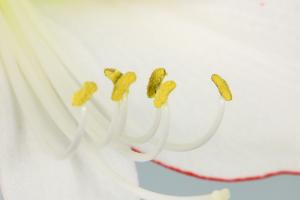What Stores Food, Water, and Waste in a Plant Cell
A plant cell is a fundamental unit of life that makes up the structure of all plant tissues. It has a unique form and function that enables it to produce essential nutrients and support the growth of the entire plant system. One of the most prominent features of a plant cell is its ability to store various materials, such as food, water, and waste products. In this article, we will discuss the different organelles in a plant cell responsible for storing these vital substances.
Chloroplasts: Storing Food in a Plant Cell
Chloroplasts are the organelles responsible for producing food in a plant cell. They contain a green pigment called chlorophyll, which is necessary for photosynthesis - the process by which plants convert sunlight, water, and carbon dioxide into organic compounds such as glucose. The glucose produced is then stored in the form of starch in specialized structures called amyloplasts, primarily found in storage organs like roots, tubers, and grains.
Aside from starch, chloroplasts also produce other energy-rich compounds such as lipids, amino acids, and nucleotides. These compounds are stored in specialized organelles such as the lipid-filled elaioplasts and protein-storing proteinoplasts. The stored lipids are utilized in membrane formation, energy storage, and signalling, while the stored proteins are used as enzymes or structural building blocks during growth and development.
Vacuoles: Storing Water and Waste in a Plant Cell
The vacuole is another crucial organelle in a plant cell responsible for the storage of various substances, particularly water and waste. Plant cells typically have one large central vacuole that occupies most of the cell's volume. It is enclosed by a membrane called the tonoplast, which regulates the flow of molecules in and out of the organelle.
The central vacuole plays an essential role in maintaining the cell's turgidity and osmotic pressure. It stores excess water and ions absorbed by the roots from the soil and releases them when needed to maintain cellular homeostasis. Additionally, the vacuole stores various waste products such as toxins, salts, and metabolic byproducts, preventing them from accumulating and damaging the cell.
Conclusion: An Overview of Plant Cell Storage Organelles
Plant cells are incredibly diverse and can accumulate and store different substances. Besides chloroplasts and vacuoles, a plant cell also contains other storage organelles such as peroxisomes, which store antioxidants and break down fatty acids and amino acids, and Glyoxysomes, which contain enzymes that transform stored fat into carbohydrates to provide energy in the seedling stage.
Each of these organelles plays a critical role in the plant's growth, development, and survival, and understanding their functions helps us appreciate the complexity and adaptation of plant life. Studying these organelles' unique features may also provide insights into ways to develop new techniques for improving crop yield and food security in our ever-changing world.

 how many times do yo...
how many times do yo... how many planted tre...
how many planted tre... how many pine trees ...
how many pine trees ... how many pecan trees...
how many pecan trees... how many plants comp...
how many plants comp... how many plants can ...
how many plants can ... how many plants and ...
how many plants and ... how many pepper plan...
how many pepper plan...































